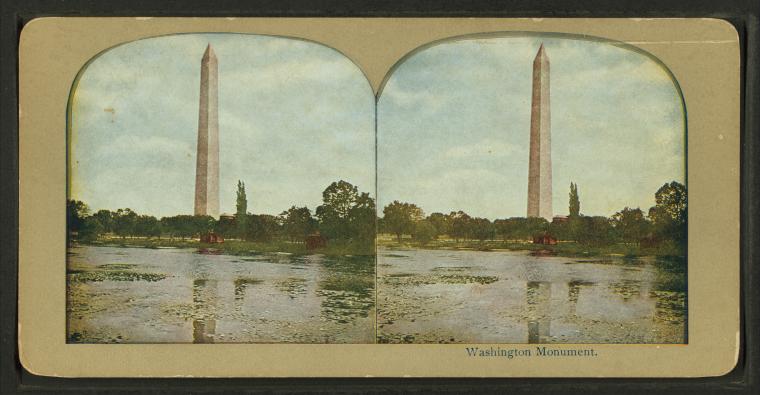Constitution
Crowdfunding a border wall—and more

On Monday 21 May 2018 Representative Diane Black (R-Tenn.) introduced a radical proposal. She proposes to fund the wall President Trump promised to build between the USA and Mexico. But she has a most unconventional funding method: crowdfunding, or raising the funds privately, through small gifts. That plan strikes at the “roots” of funding of grand public projects. As such it suggests a pathway to limited government even Rep. Black might not see—yet.
Details of the crowdfunding proposal
Rep. Black calls her bill (HR 5876) the Border Wall Trust Fund Act. Its purpose:
To allow the Secretary of the Treasury to accept public donations to fund the construction of a barrier on the border between the United States and Mexico, and for other purposes.
The bill runs to four pages—exquisitely simple as bills go. It tells the Secretary of the Treasury to set up an account, then receive private funds in that account. The money the account receives, the bill then appropriates for building the wall.
Of course, Rep. Black must answer a few practical questions. Will someone have to write the code for accepting the donations? Or might the Treasury Department use an existing crowdfunding platform, like GoFundMe.com, Kickstart, or the like?
Precedents for crowdfunding
The precise mechanism for the Border Wall Trust Fund does not have an exact precedent. But in 1833 a private group did start to raise funds to build a monument to President George Washington. That monument stands today, of course.
More particularly, the Minuteman Civil Defense Corps formed during the Bush (Younger) administration, for two purposes. First they wished to set up their own volunteer border patrol force. The force would consist of retired LEOs and other volunteers, bringing their own firearms. They hoped that with such a force they could make citizens’ arrests of those illegally crossing the border. For that they would need a law defining illegal border incursion as a felony. (Any private citizen can make a felony arrest if he witnesses a felony.) Failing that, the President could specifically call for their assistance in patrolling the border. Failing that, they hoped to spot and report border crossers to the U.S. Border Patrol. They actually set up demonstration projects along the Arizona and New Mexico borders, that proved the concept.
Second, they designed their own border fence and proposed to raise money to build it themselves. They hoped to buy easements from ranchers and other property owners along the border, plus building materials. The MCDC plan called for a double fence, with “Webcams,” motion sensors, and the like to let people monitor it.
For various reasons, the project stalled. The Web site still stands but has seen no updates since 2010.
Setting a precedent for other crowdfunding projects
But crowdfunding through a government account does represent a significant departure from the usual way to fund public works. Libertarians have always bristled at the spectacle of long-serving legislators insinuating pet projects into major bills. Those projects would, of course, have those legislators’ names on them, thus appealing to “the Devil’s favorite sin”: vanity. Even those who accept the three core functions of government (police, military and judiciary) prefer to use voluntary funds. Government lotteries have become a popular way to fund education departments. But lotteries can drain the purses of those who can least afford it, by appealing to gambling addiction.
Crowdfunding lets people who care about a specific project or program, fund it directly. Each donor gives a relatively tiny amount. But those amounts can add up fast. That tendency drives the success of GoFundMe and similar platforms.
Rep. Black wants only to bypass the usual folderol about appropriating taxpayer funds. With the country’s debt at more than $20 trillion, anyone would welcome an alternative to selling yet more bonds. More to the point, no one could object to having someone else offer to pay for any particular project. That, more than any other reason, drove Rep. Black to act.
But this Act will set another precedent. Any controversial government project or program could open itself to accept private donations to fund its budget. Furthermore, any such program, falling outside the core functions of government, could then privatize itself completely. This would accomplish a goal libertarians have long sought: reducing the size and scope of government.
For all these reasons, conservatives and libertarians alike should welcome this crowdfunding proposal. It makes the border wall happen when perhaps nothing else can. And it points the way toward general downsizing of government and reducing the “stakes” of future elections.
Terry A. Hurlbut has been a student of politics, philosophy, and science for more than 35 years. He is a graduate of Yale College and has served as a physician-level laboratory administrator in a 250-bed community hospital. He also is a serious student of the Bible, is conversant in its two primary original languages, and has followed the creation-science movement closely since 1993.
-

 Civilization3 days ago
Civilization3 days agoDC Pipe Bomb Arrest Raises Questions About Christopher’s Wray’s FBI
-

 Civilization4 days ago
Civilization4 days agoThe Legal Logic Behind U.S. Operations Against Narco-Terrorist Networks
-

 Executive4 days ago
Executive4 days agoNewsom’s ‘National Model’ for Homeless Wracked by Fraud
-

 Executive3 days ago
Executive3 days agoWhen You’re in a Hole, Stop Digging
-

 Education3 days ago
Education3 days agoWaste of the Day: Taxpayers Subsidize Football Coach Severance
-

 Executive2 days ago
Executive2 days agoWaste of the Day: Obamacare Failed Test, Approved Fraudulent Subsidies
-

 Civilization2 days ago
Civilization2 days agoPence Calls on Trump To Fire RFK Jr Over Abortion Drug
-

 Executive4 days ago
Executive4 days agoWaste of the Day: Feds Pay Nonprofits That Sue the Government








